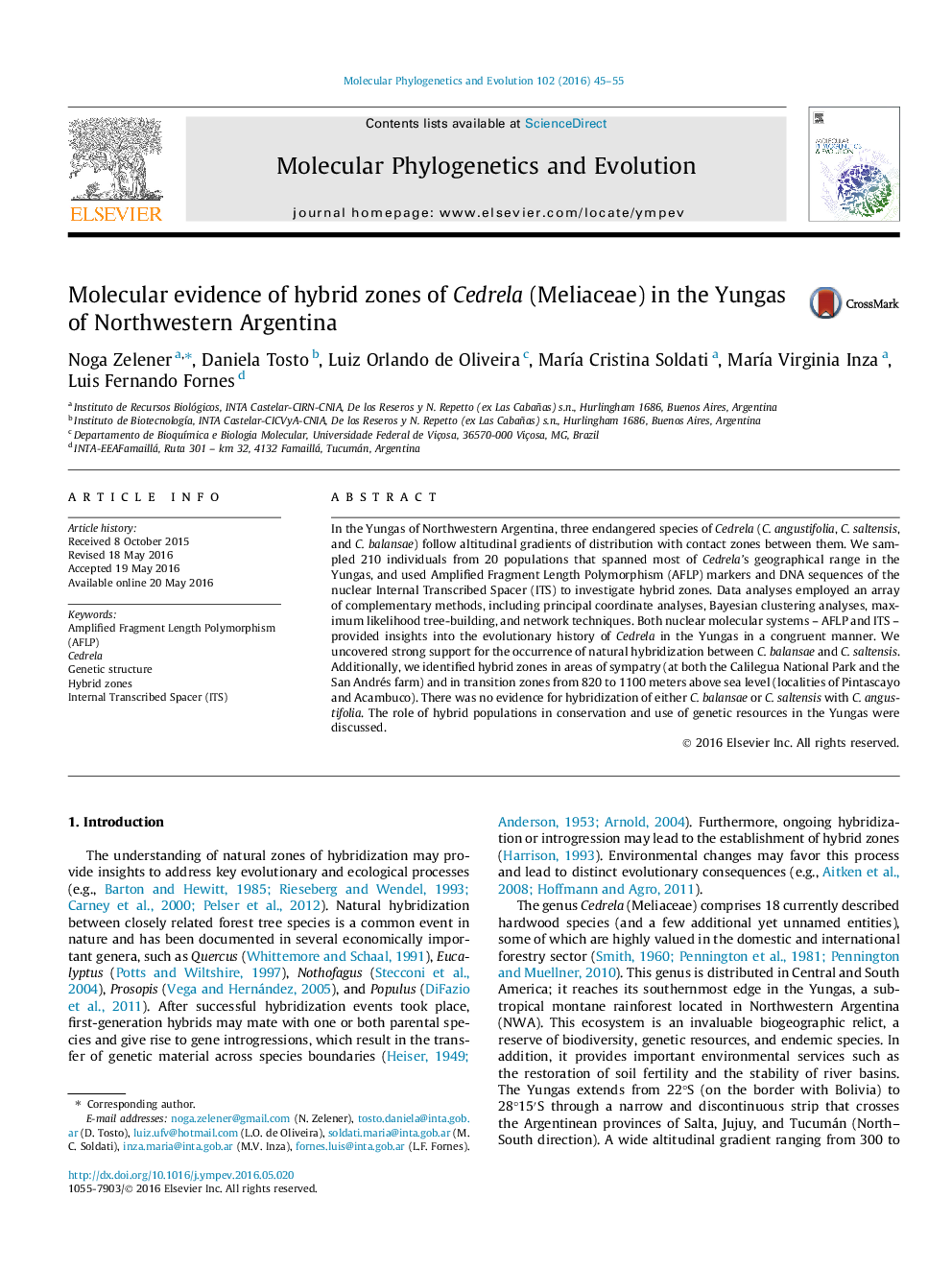| Article ID | Journal | Published Year | Pages | File Type |
|---|---|---|---|---|
| 5918459 | Molecular Phylogenetics and Evolution | 2016 | 11 Pages |
â¢Cedrela balansae and C. saltensis formed hybrid zones in the Yungas.â¢Hybrid zones exist in areas of sympatry, at intermediate elevations.â¢C. angustifolia hybridized neither with C. balansae nor with C. saltensis in the Yungas.
In the Yungas of Northwestern Argentina, three endangered species of Cedrela (C. angustifolia, C. saltensis, and C. balansae) follow altitudinal gradients of distribution with contact zones between them. We sampled 210 individuals from 20 populations that spanned most of Cedrela's geographical range in the Yungas, and used Amplified Fragment Length Polymorphism (AFLP) markers and DNA sequences of the nuclear Internal Transcribed Spacer (ITS) to investigate hybrid zones. Data analyses employed an array of complementary methods, including principal coordinate analyses, Bayesian clustering analyses, maximum likelihood tree-building, and network techniques. Both nuclear molecular systems - AFLP and ITS - provided insights into the evolutionary history of Cedrela in the Yungas in a congruent manner. We uncovered strong support for the occurrence of natural hybridization between C. balansae and C. saltensis. Additionally, we identified hybrid zones in areas of sympatry (at both the Calilegua National Park and the San Andrés farm) and in transition zones from 820 to 1100Â meters above sea level (localities of Pintascayo and Acambuco). There was no evidence for hybridization of either C. balansae or C. saltensis with C. angustifolia. The role of hybrid populations in conservation and use of genetic resources in the Yungas were discussed.
Graphical abstractDownload full-size image
